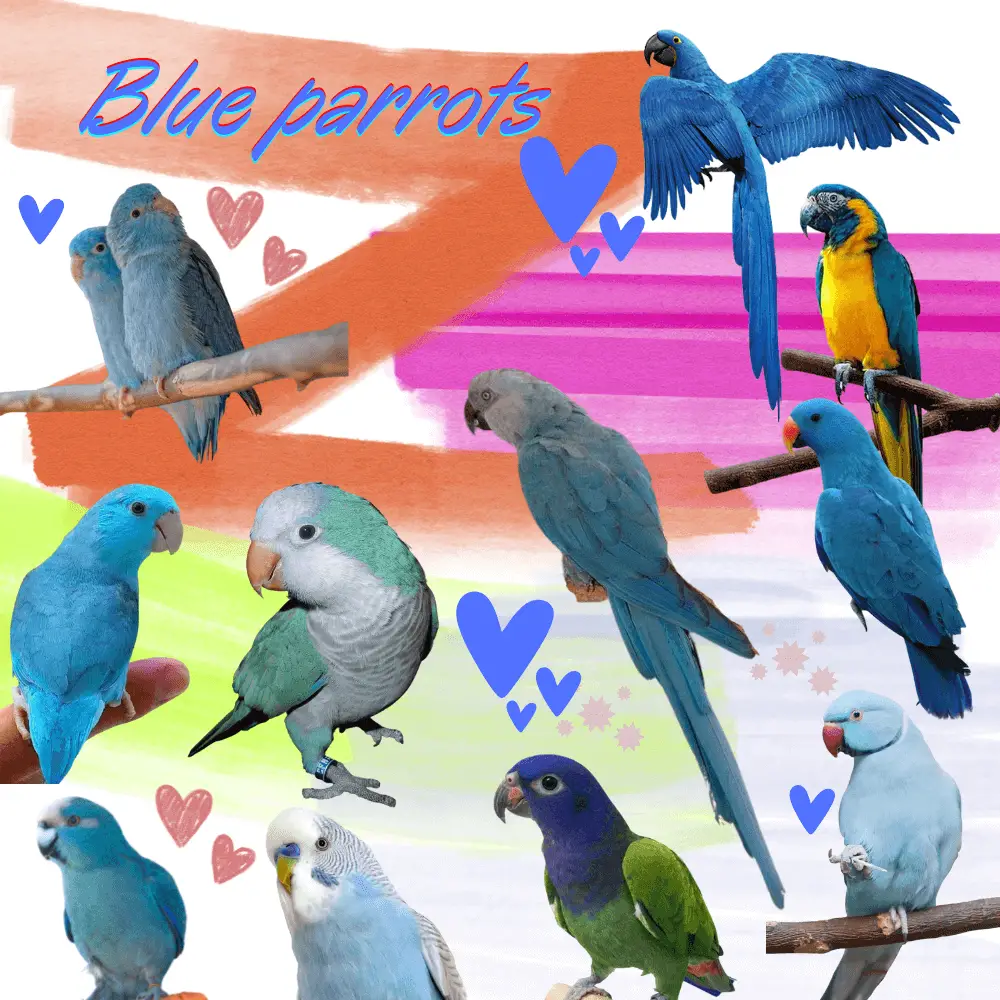Blue parrots: Although green is a dominant color in many parrots, there are still several pet birds with beautiful blue feathers. Blue parrot species range from small to very large in size and come in powdery light blue and deep indigo. Some parrots are blue while others have bright blue spots. Here are eight species of blue parrots that you will often find as pet birds.
Blue and gold macaw
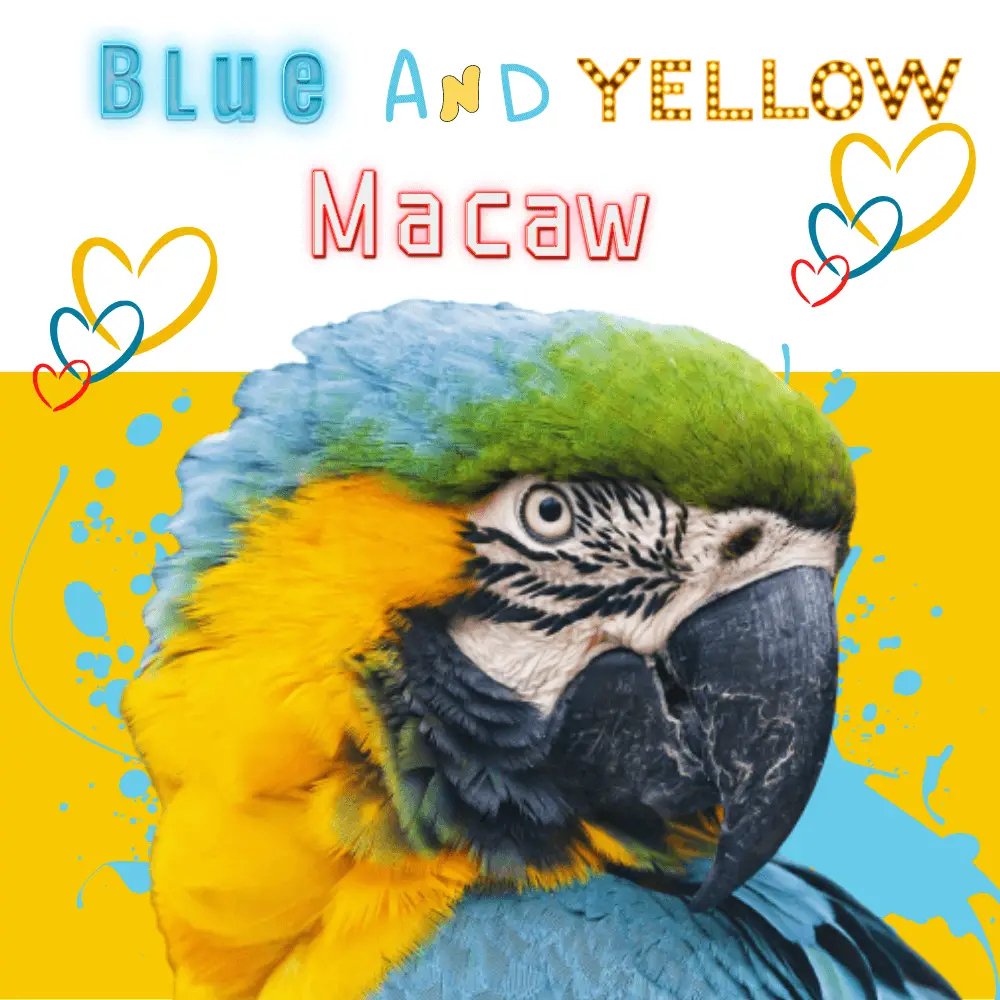
Native to South America, the handsome blue-and-gold macaw features a bold mix of bright blue and yellow feathers. Among its most striking features are the white patches of skin around the eyes, typical of most macaw species.
In addition, its green forehead provides a nice contrast to its blue and yellow body. These intelligent and social birds need dedicated keepers who can give them plenty of mental and physical exercise.
- Length: 30 to 36 inches
- Weight: 28 to 46 ounces
Physical Characteristics: Green forehead fading to teal on the nape, back, tail, and wings; breast and underwings yellow; large black beak
Budgerigar (Blue Mutation)
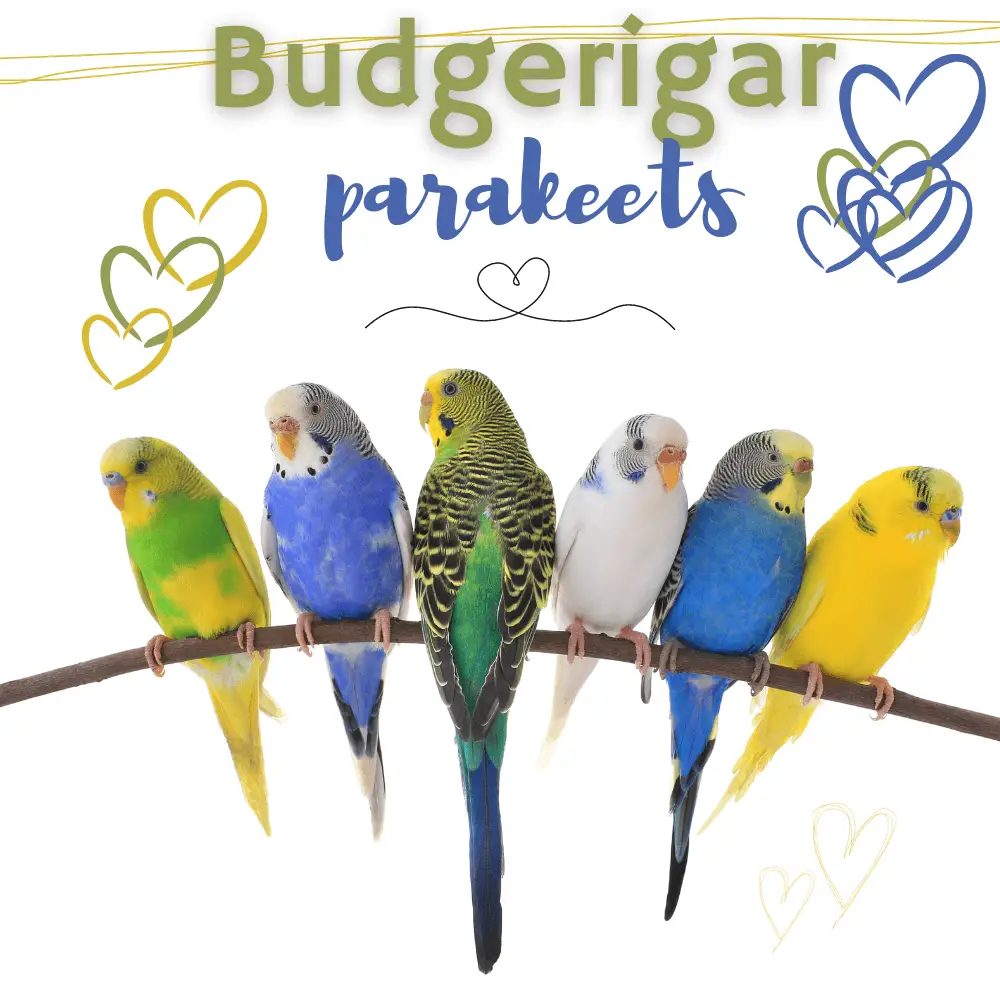
Two blue budgies on a piece of wood In the wild, budgie parakeets normally have green and yellow plumage. But in captivity, selective breeding has resulted in a whole host of color mutations, the most popular being blue.
These parakeets feature blue plumage on the head, chest, and belly, often with black spots and stripes on the head, wings, back, and tail.
Suitable for keepers of any experience level, parakeets have been among the most popular pet bird species for decades.
- Length: 6 to 8 inches
- Weight: 1 ounce
Physical characteristics: Abdomen green; black and yellow back; yellow head; dark blue tail; mutations: blue, yellow, white, and gray
Hyacinth macaw
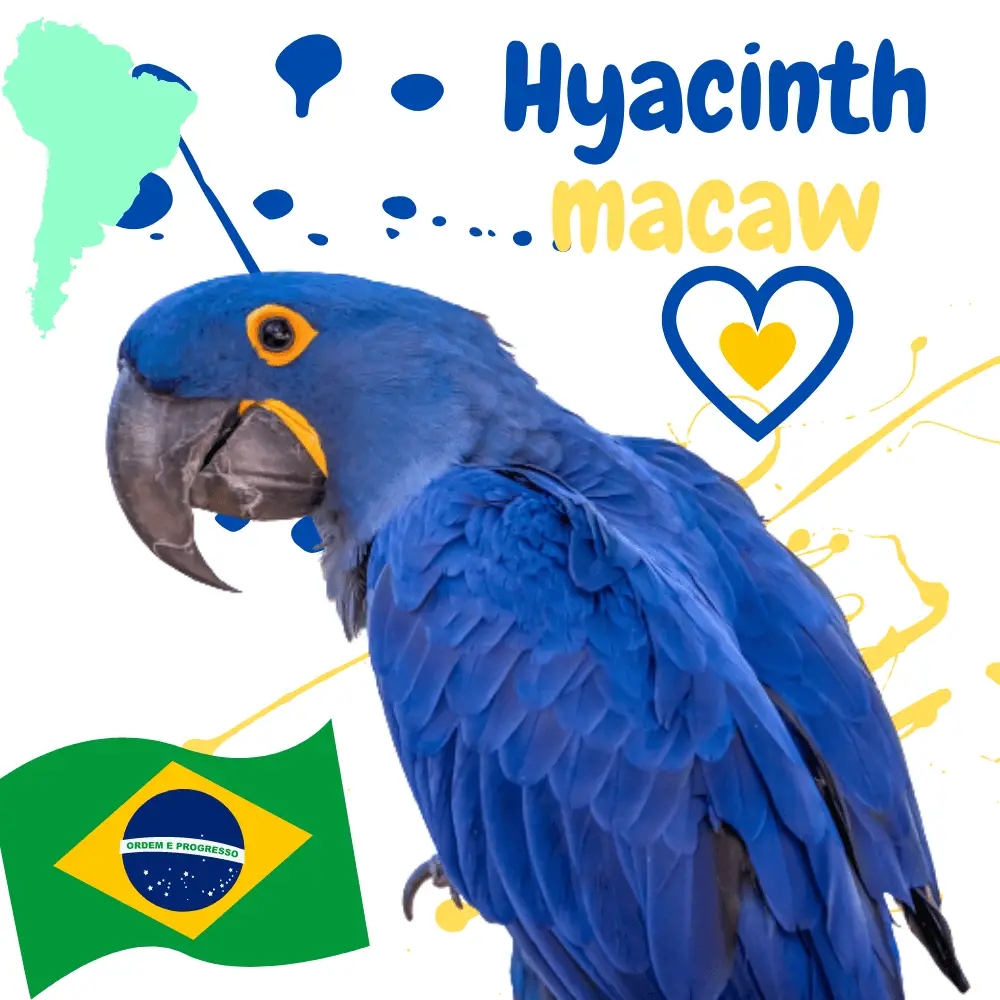
The largest of all macaw species, the hyacinth macaw is almost entirely deep, solid blue with faint flecks of yellow around the eyes and beak.
These birds are widely known as “gentle giants”, and despite their intimidating beaks, they have a reputation for being extremely friendly and affectionate. They need plenty of attention from their keepers as well as plenty of room to exercise.
- Length: 40 inches
- Weight: 42 to 51 ounces
Physical Characteristics: Solid blue plumage; yellow spots around eyes and beak; black beak; dark gray legs
Pacific Parrotfish (Blue Mutation)
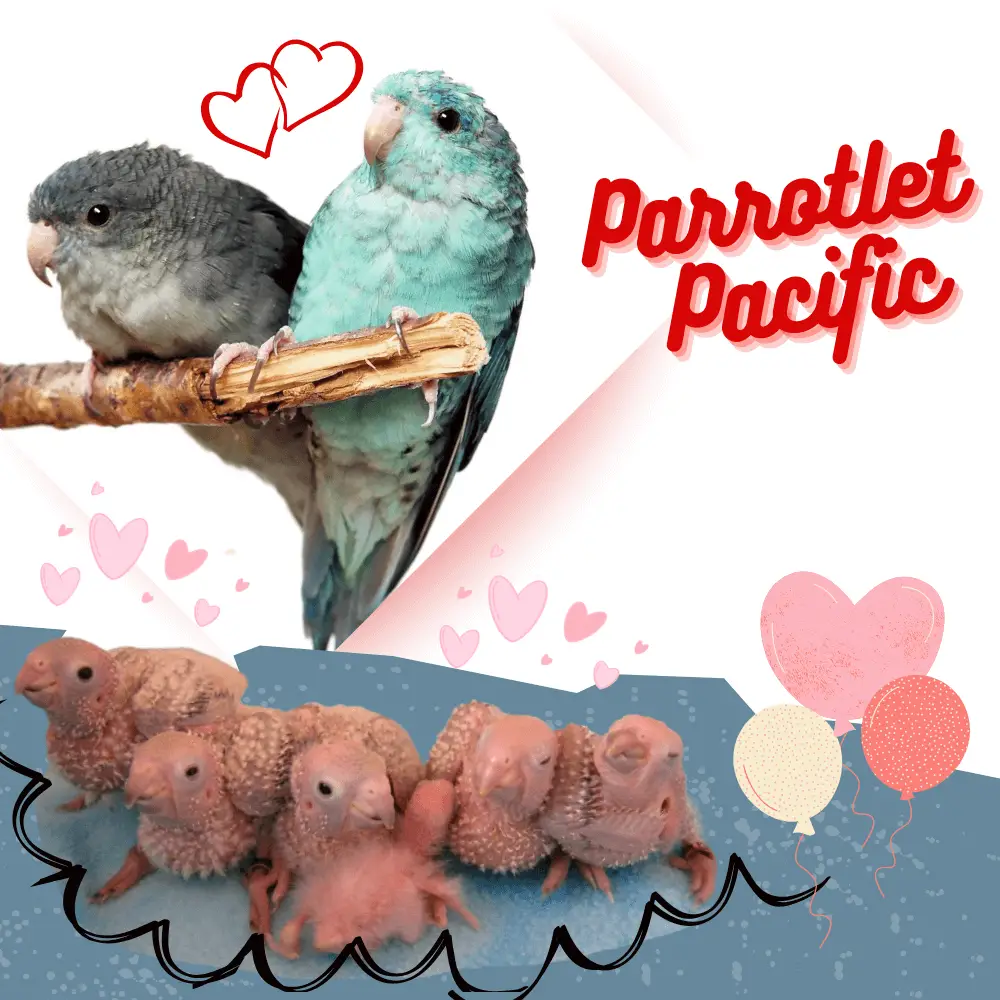
Another popular blue parrot is the blue color mutation of the Pacific parrot. These feisty birds are the smallest species of true parrots, but they pack a lot of personality into their little bodies.
Parrots are a great choice for people who don’t have enough space to accommodate a larger species. Although small, parrots need many hours of daily handling and exercise to stay healthy and tame.
- Length: 4 to 5 inches
- weight: 1 ounce
Greenhead and body; blue on the back and behind eyes; mutations: blue, yellow, and white
Blue-crowned Parakeet

blue-crowned conure Popularized in the movie “Paulie,” the blue-crowned conure sports a bright blue head while the rest of its body is green.
Known as one of the friendliest species of conure, these birds enjoy spending time with their keepers.
It is not a bird that likes to be caged. Give him several hours of supervised out-of-cage time each day, as well as large an enclosure as possible for when he needs to be confined.
- Length: 15 inches
- Weight: 3 to 6 ounces
Physical Characteristics: Bright blue head; green body; tip of tail reddish; pink legs; fawn beak; white rings around the eyes.
Quaker Parrot (Blue Mutation)
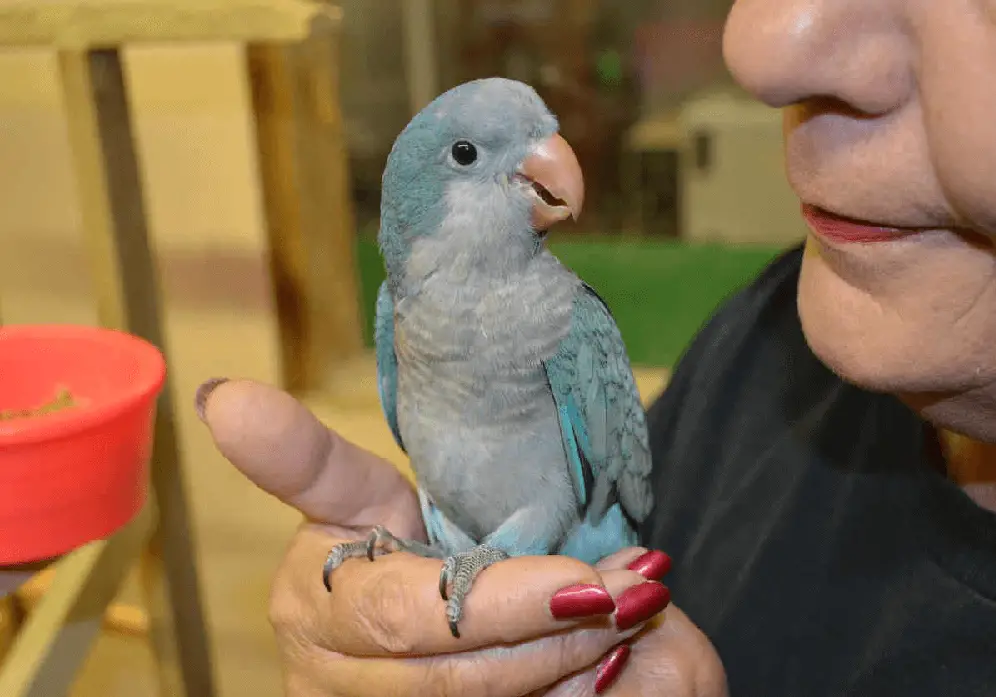
A blue monk parakeet, or quaker parrot, in an aviary Quaker parrots are mostly green in the wild, and the beautiful blue mutation wasn’t developed until the early 2000s.
These spunky birds tend to bond closely with their keepers, and they love to chat. In fact, some are able to learn an impressive vocabulary of human words and phrases, as well as imitate household sounds and songs.
- Length: 11 to 12 inches
- Weight: 3 to 5 ounces
Physical Characteristics: Greenhead, wings, and body; gray chest, cheeks, and throat; blue flight feathers; mutations: blue, albino, cinnamon, lutino, and foot
Blue-headed Pionus

Native to Central and South America, the blue-headed pioneer can live up to 40 years in captivity. These birds tend to be relatively easy-going and quiet, especially compared to other parrot species.
They are also fairly gentle birds, with no tendency to bite. Like other large pet birds, they need ample space to play outside their cage under supervision.
- Length: 11 inches
- Weight: 8 to 9 ounces
Physical Characteristics: Blue head and neck; green body; black spots on the ears; red on the underside of tail; black beak with red sides
Indian ring-necked parakeet
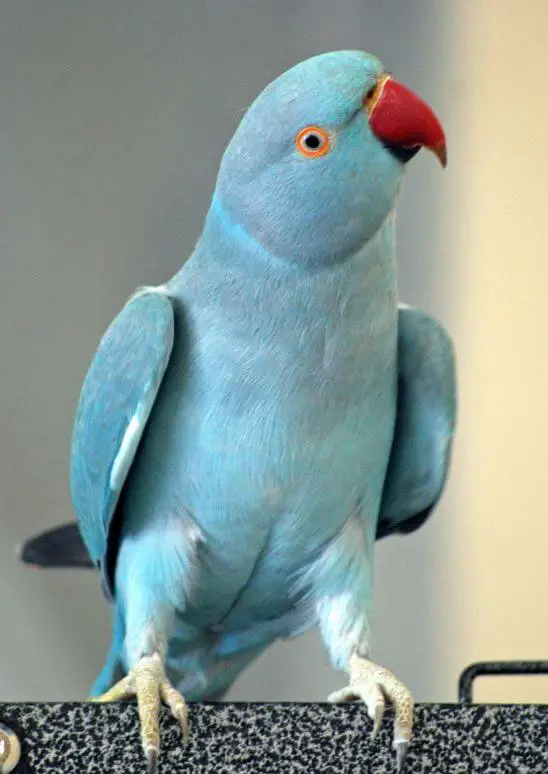
blue Indian ringneck parakeet in a piece of wood In the wild, Indian Ringnecks are usually bright green, but selective breeding has developed several color mutations, including blue.
These birds are very intelligent and can have chewing problems or other destructive behaviors if they don’t have enough to do. They also need to be well socialized and handled to maintain a gentle and tame demeanor.
- Length: 14 to 17 inches
- Weight: 4 ounces
Physical Characteristics: Green plumage, blue tail, yellow underwings; males have black and pink rings around their necks; mutations include Blue, Cinnamon, Albino, and Lutino

